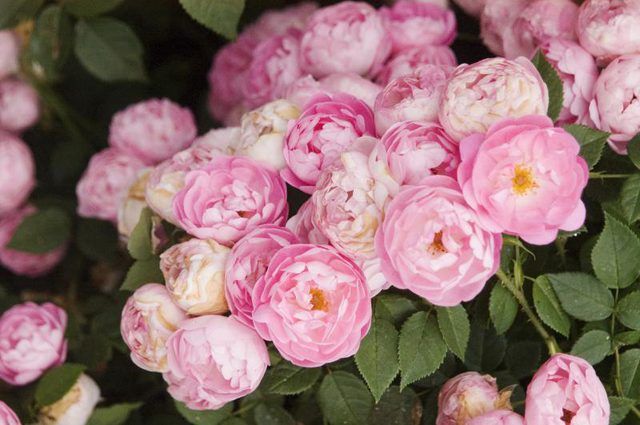Bulbs
Flower Basics
Flower Beds & Specialty Gardens
Flower Garden
Garden Furniture
Garden Gnomes
Garden Seeds
Garden Sheds
Garden Statues
Garden Tools & Supplies
Gardening Basics
Green & Organic
Groundcovers & Vines
Growing Annuals
Growing Basil
Growing Beans
Growing Berries
Growing Blueberries
Growing Cactus
Growing Corn
Growing Cotton
Growing Edibles
Growing Flowers
Growing Garlic
Growing Grapes
Growing Grass
Growing Herbs
Growing Jasmine
Growing Mint
Growing Mushrooms
Orchids
Growing Peanuts
Growing Perennials
Growing Plants
Growing Rosemary
Growing Roses
Growing Strawberries
Growing Sunflowers
Growing Thyme
Growing Tomatoes
Growing Tulips
Growing Vegetables
Herb Basics
Herb Garden
Indoor Growing
Landscaping Basics
Landscaping Patios
Landscaping Plants
Landscaping Shrubs
Landscaping Trees
Landscaping Walks & Pathways
Lawn Basics
Lawn Maintenance
Lawn Mowers
Lawn Ornaments
Lawn Planting
Lawn Tools
Outdoor Growing
Overall Landscape Planning
Pests, Weeds & Problems
Plant Basics
Rock Garden
Rose Garden
Shrubs
Soil
Specialty Gardens
Trees
Vegetable Garden
Yard Maintenance
The Best Time to Cut Back Rose Bushes
The Best Time to Cut Back Rose Bushes. As one of the most celebrated flowering shrubs of all time, roses (*Rosa spp.*) come in a wide assortment, boasting blooms of almost every color. Depending on the cultivar, roses are hardy in U.S. Department of Agriculture plant hardiness zones 2 through 10. They bloom year after year if growers follow pruning...

As one of the most celebrated flowering shrubs of all time, roses (Rosa spp.) come in a wide assortment, boasting blooms of almost every color. Depending on the cultivar, roses are hardy in U.S. Department of Agriculture plant hardiness zones 2 through 10. They bloom year after year if growers follow pruning guidelines that keep the plants healthy. Pruning, or cutting back the bushes, encourages blooming and promotes new growth.
Pruning Cues
A rose bush's class determines when the bush should be pruned. The two classes of roses are those that repeatedly bloom all summer and those that bloom once.
Repeat-blooming roses require an annual pruning between mid-February and mid-April, based on their location. Rosarians suggest pruning roses when forsythia bushes (Forsythia spp.) start blooming. An alternate rule of thumb is to start pruning when new rose buds form and begin to swell.
Old-fashioned and climbing roses bloom once each year and need pruning after they bloom sometime in early summer. This class of roses produces blossoms on existing stems rather than new growth.
Apart from annual pruning, any stem or wood that is diseased or dying should be removed immediately throughout the year.
Pruning Necessities
Several tools and other items are needed for pruning roses. Ensure each tool's cutting blade is sharp and sterilized with 70 percent rubbing alcohol. Dip small tools in a container filled with rubbing alcohol, and then dry the tools with a clean cloth. Wipe large tools thoroughly with a soft cloth soaked with rubbing alcohol, and use a clean cloth to dry them.
The tools and items needed for pruning are:
Bypass pruning shears that cut like scissors.
Long-handled lopping shears.
Pruning saw for thick, old stems.
Heavy gloves to protect your hands.
White, water-based school glue.
Pruning Techniques
Some pruning tasks are applicable to all roses. For example, make 45-degree angle cuts each time, and periodically sterilize your tools with alcohol as you prune. Also:
Remove damaged wood stems by cutting each at least 1 inch below darkened wood, leaving green wood with a white center. If the center is tan, continue cutting down the branch until the pith is white. The cut also should be ? inch above a bud that faces outward rather than toward the bush's center.
Remove branches that grow toward the center of the bush. This technique opens the center for air and light, and reduces the chances for diseases.
Identify branches that cross each other or rub together. Remove the weakest branch of two such branches.
Remove all branches that are smaller in diameter than a pencil.
Remove suckers from the root base. Dig into the soil to find where suckers originate, and remove them.
Seal all cuts with a thin layer of white, water-based school glue to prevent borers from attacking.
On Oct. 1, all pruning tasks should cease so that rose plants have the opportunity to harden off for winter.
Pruning for Blooms
Repeat-blooming roses can be pruned to a uniform height of 12 to 24 inches. Leave nine to 12 healthy stems that are at least ? inch in diameter. If you want larger blooms for cut flowers, then prune the bushes to no taller than 15 inches; the plants will produce fewer flowers, but the flowers will be larger. Cut off the spent blooms of repeat-blooming roses throughout summer, cutting each faded bloom down to the first outward-facing rosebud with five leaflets. Removing spent blooms is called deadheading.
Once-blooming roses, such as old-fashioned and most climbing varieties, do not require severe pruning. Do not remove more than one-third of each plant. Cut away only dead, damaged and unproductive stems. The remaining branches will produce next years blooms. Deadhead once-blooming roses by removing only their spent petals, leaving their rose hips intact.
Rose hips come from rose blossoms. They are small, round fruits that mature in fall, turning red, orange, burgundy, scarlet or yellow. They are edible for humans and wildlife and offer a showy display in winter.